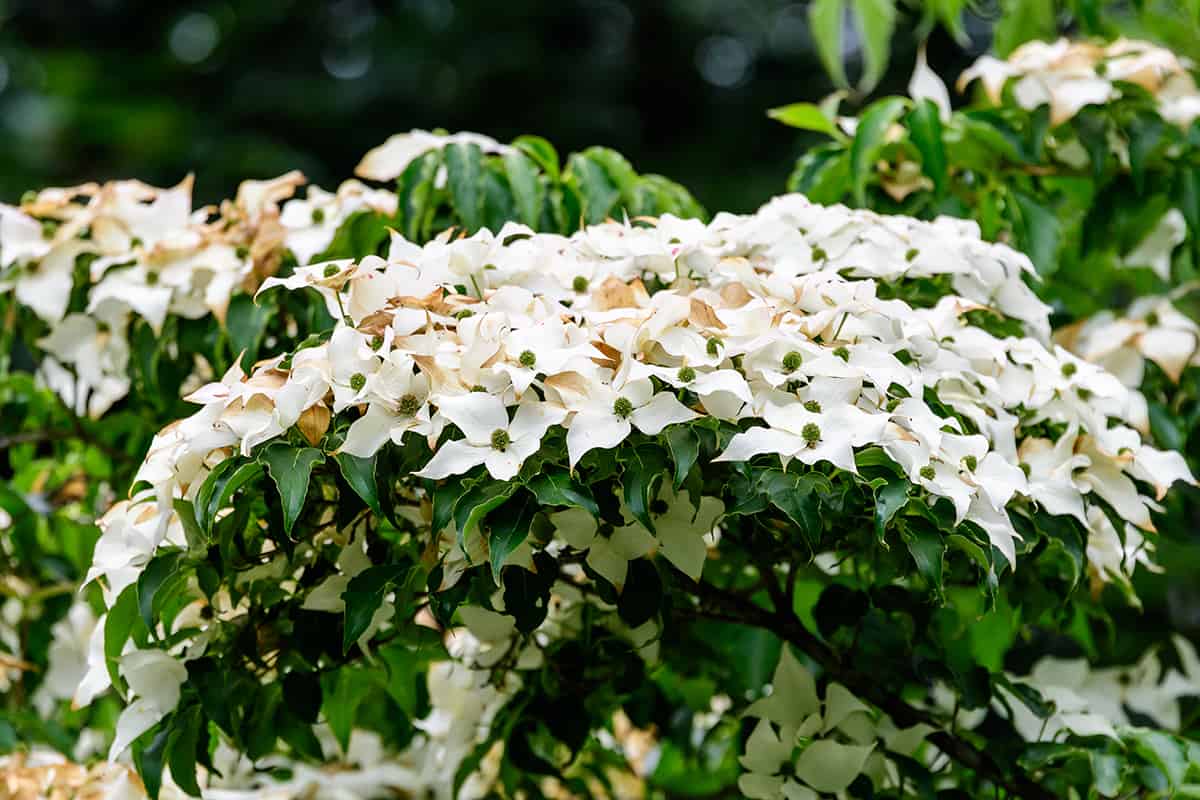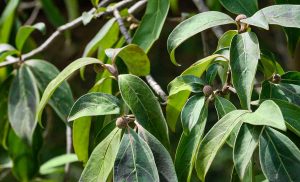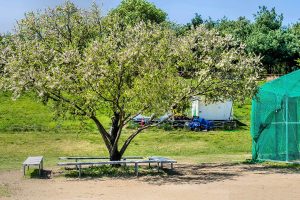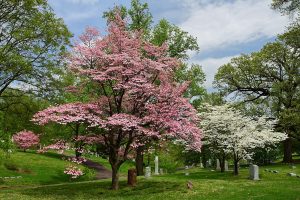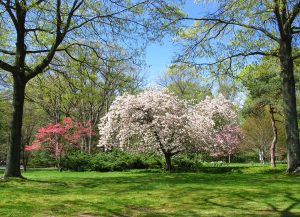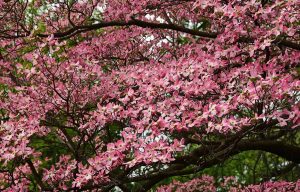Japanese Dogwood is a type of ornamental, flowering tree, that also goes by the name of Kousa Dogwood and Chinese Dogwood. It is known for its ability to flower in abundance, with blooms that are actually made from leaf bracts rather than petals. Japanese Dogwood trees are quite compact, making them suitable for small to medium gardens.
Here we explore the different varieties of this easy-care tree and reveal the best ways to care for it.
- Botanical name: Cornus kousa
- Common names: Japanese Dogwood, Japanese Flowering Dogwood, Flowering Dogwood, Kousa Dogwood, Cornus Japonica, Chinese Dogwood, Japanese Strawberry Tree
- Plant family: Cornaceae
- USDA hardiness zone: 5 – 8
- Mature height: 15 to 30 feet
- Mature spread: 15 to 30 feet
Table of Contents
What is a Japanese Dogwood Tree?
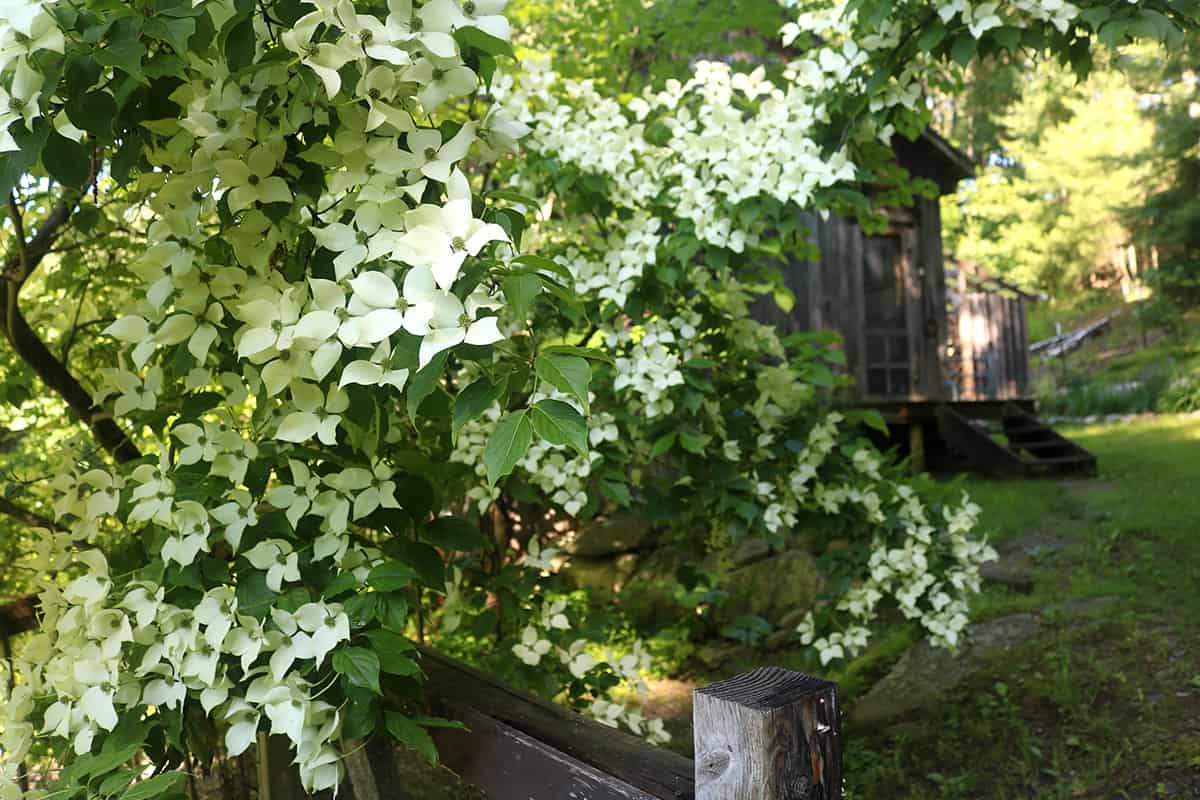
The Japanese Dogwood takes the shape of a small, deciduous tree or a multi-stemmed shrub. It is favored for its ability to provide year-round interest, despite being deciduous. The tree blooms in spring, with star-shaped white flowers that are actually composed of pointed leaf bracts which surround the true, tiny green flowers at the center.
These flowers develop into perfectly spherical fruits during the summer, which closely resemble strawberries. They are pink to red in color, contrasting heavily against the background of bright green foliage.
The leaves of the Japanese Dogwood tree are ovate, clothing the layered branches of the tree to provide excellent shade. In fall, the leaves develop to intense shades of red and purple, before dropping to the ground. Through winter, the bark of the tree is revealed, which is gray and textured, and exfoliates for added interest.
Origins of the Japanese Dogwood Tree
Japanese Dogwood trees are native to Japan, China, and Korea, and as such, they have numerous common names, including Chinese Dogwood and Kousa Dogwood. The first Japanese Dogwood was recorded in the United States in 1875.
A Christian legend surrounds the Japanese Dogwood tree, which claims that wood from the dogwood was used to create the cross that Jesus was crucified on.
As a result, God cursed the Japanese Dogwood, which is said to originally have been a very large and straight tree, so that it would only grow to small heights, with jagged branches, never to be used again as a crucifix. At the same time, the legend tells that God also blessed the Japanese Dogwood so that it would bloom at Easter each year, reminding Christians of the selflessness of Jesus.
Types of Japanese Dogwood Tree
Summer Gold
This is a compact cultivar of Japanese Dogwood, which grows to between 7 and 8 feet in height, and 3 to 4 feet in width. It is a variegated variety, producing leaves that are bright green in the middle, with yellow-lime colored margins.
These leaves become bright red in fall, with highlights of hot pink around the perimeter of the foliage. Summer Gold is an especially prolific bloomer, which appears to be covered in creamy-white star-shaped flowers in spring. As a small variety of Japanese Dogwood, this tree is well suited for life in a pot, or in a compact garden.
Miss Satomi
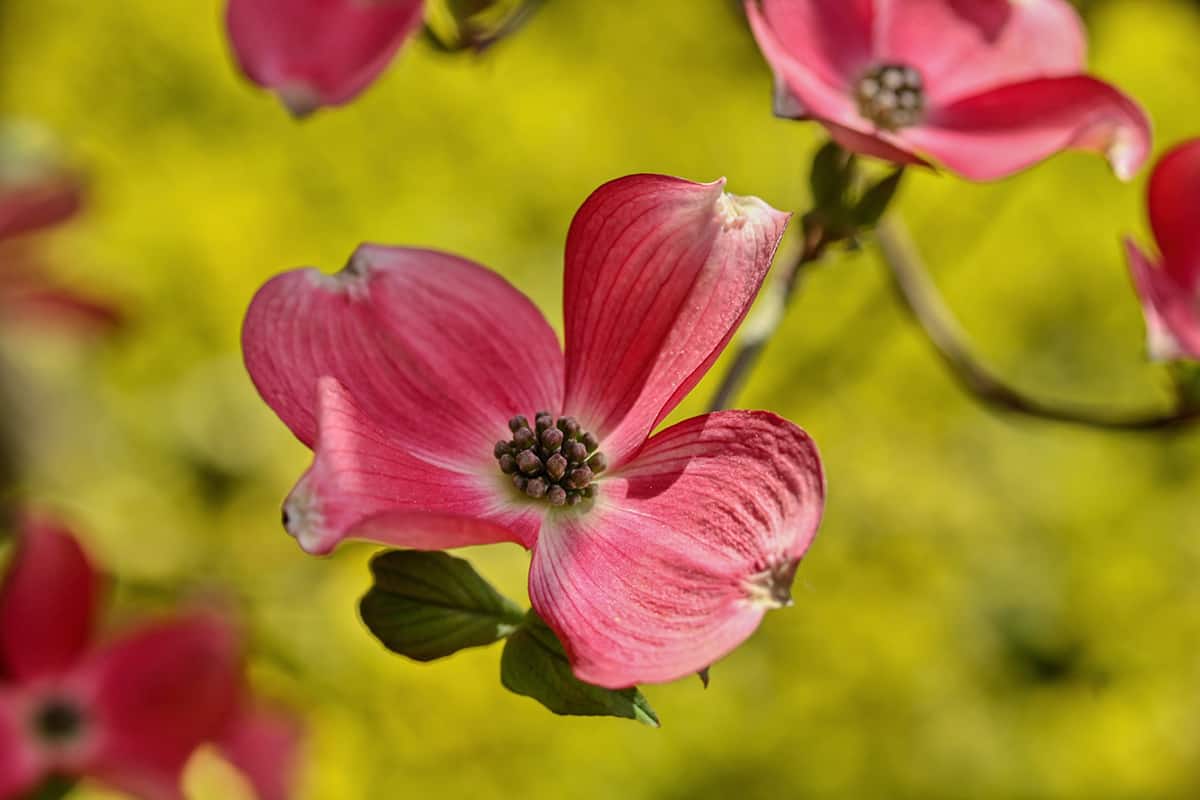
Miss Satomi is a popular variety of Japanese Dogwood, having achieved the Award of Garden Merit from the Royal Horticultural Society. It grows best as a medium to large, spreading shrub, reaching between 12 and 15 feet in height with a similar-sized width.
The blooms of this plant are composed of four pale pink bracts which surround tiny clusters of green-yellow flowers, and these emerge in spring to completely cover the shrub.
The flowers develop into pink strawberry-like rounded fruits which are popular for birds to feast on. Dark green leaves turn vivid shades of red and purple in fall before dropping to reveal mottled, exfoliating bark.
Scarlet Fire
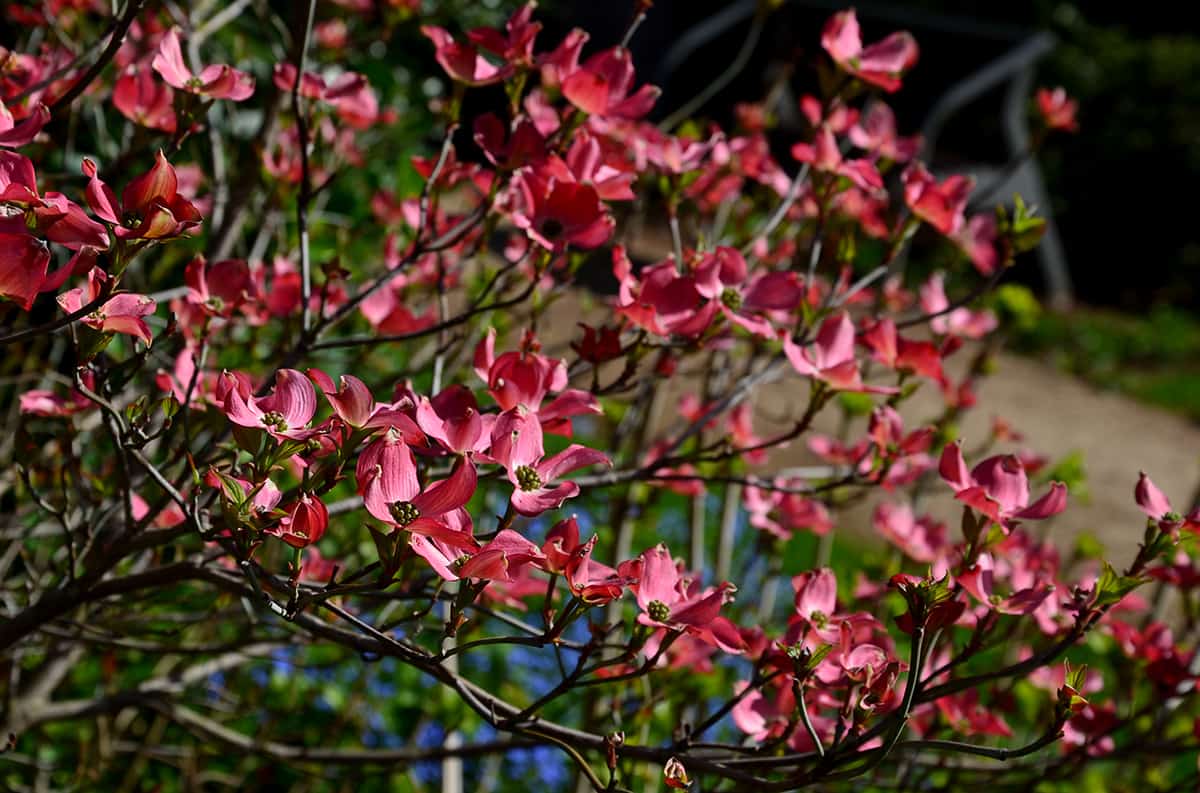
This is a small deciduous tree growing to average heights of 20 to 25 feet. It is an extremely heavy bloomer, becoming completely covered in hot pink flowers toward the end of spring. Each flower measures 4 to 5 inches across, and is made up of four pointed pink leaf bracts which surround the central cluster of tiny green flowers.
The striking flowers and the fact that they last for between 6 and 8 weeks really sets this variety of Japanese Dogwood apart from other cultivars. Scarlet Fire is a vigorous grower, gaining between 1 and 2 feet in height each year.
Milky Way

This Japanese Dogwood cultivar is known for its profusion of pure white flowers which bloom in spring, entirely covering the tree so that the leaves beneath are almost completely hidden.
These then develop into pale pink round fruits which resemble strawberries. Milky Way is a reliable and robust small tree, reaching between 25 and 30 feet in height with a spread of equal size.
Greensleeves
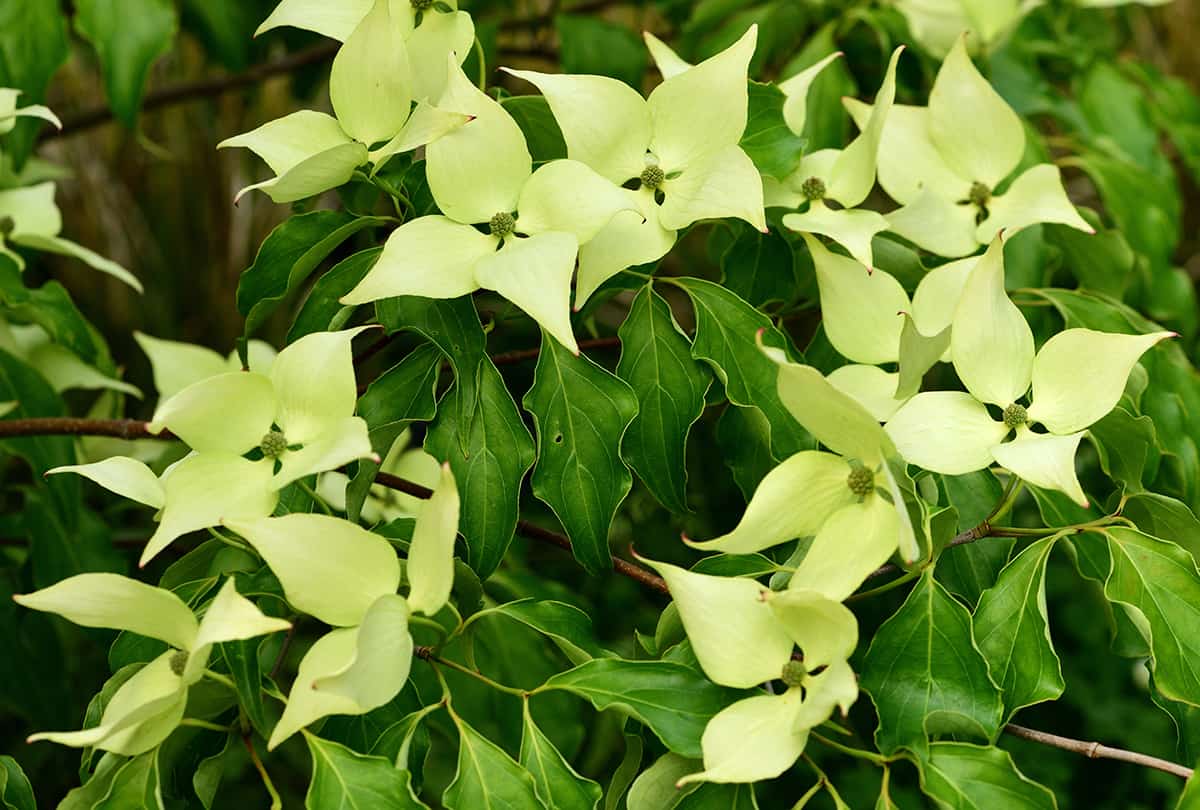
This Japanese Dogwood cultivar is named Greensleeves after the green-tinged flowers it produces in spring. The bracts emerge in white, flushed with fresh green, and gradually fade to a shade of cream.
By summer, they develop into edible fruits in a dark shade of pink which contrasts against the mid-green foliage. In fall, the glossy green leaves fade to red and purple.
How to Care for Japanese Dogwood Trees
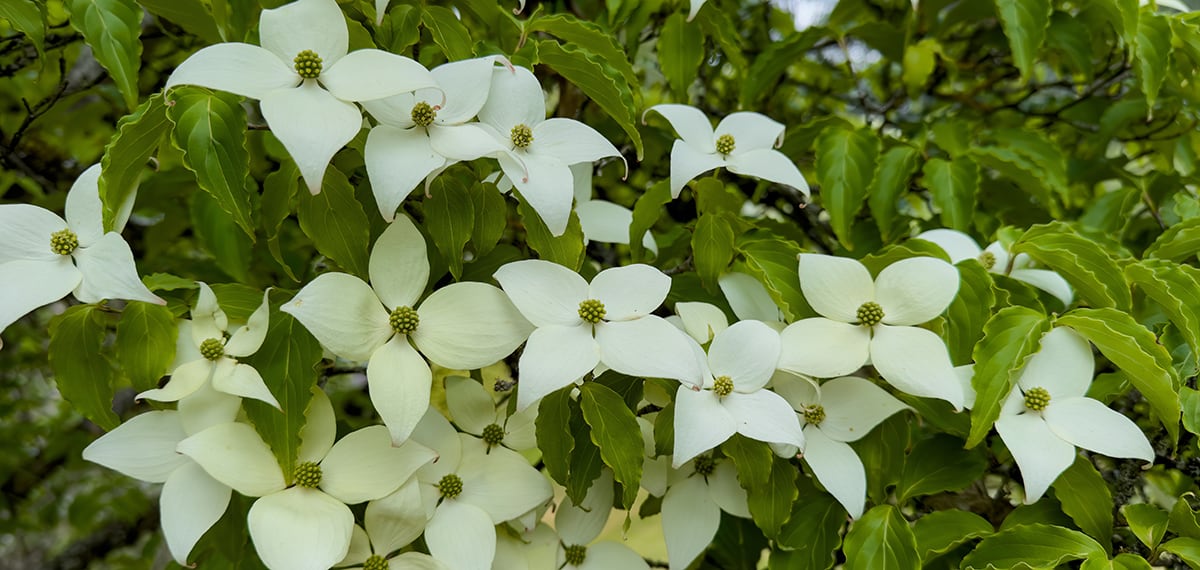
- Light: Full sun to partial shade
- Soil: Well-draining, acidic, rich
- Water: Average moisture
- Hardiness: USDA zones 5 – 8
Light
Japanese Dogwood performs best in full sun to partial shade. For the best abundance of blooms, a position of full sun would be preferable.
Soil
This tree is tolerant of a wide range of soils as long as they are able to drain well. Acidic to neutral pH is preferred, and a high content of organic matter in the soil will improve the performance of the tree. If your soil does not drain freely, amend it with the addition of grit, gravel, and sand before planting a Japanese Dogwood. These plants cannot survive in poorly draining soils.
Water
Japanese Dogwoods need to be grown in soils that are consistently moist, though they don’t like to be in wet or waterlogged soils, which is why a well-draining soil is essential.
Water these trees generously through spring and summer, especially when young. Well-established trees will develop some tolerance to drought, but prolonged dry conditions will cause the tree to weaken.
Temperature
Japanese Dogwood trees are suitable for growing in USDA hardiness zones 5 to 8 where temperatures do not get very low or very high.
These are quite hardy trees, so many people living in zones that hover between 4 and 5 also find success growing them. They are hardy to frost, being able to cope with temperatures down to 5°F.
Fertilizer
Japanese Dogwood trees prefer soils that are fertile and rich in organic content. If your soil is poor, you can amend it by working in well-rotted manure and compost to the top two inches of the soil after the tree has been planted, or you can work it in deeper before planting.
Fertilizer can be useful for Japanese Dogwoods growing in soils that lack high levels of nutrients. Apply an all-purpose fertilizer at intervals throughout spring and summer.
Pests and Diseases
This tree is mostly pest and disease free, but it can fall victim to common fungal diseases such as powdery mildew and leaf spot. These diseases thrive in moist and damp conditions, so the best way to encourage prevention is to plant the tree in full sun to allow any moisture on the leaves to dry up quickly.
Pests that can affect the Japanese Dogwood include scale, leafhoppers, and dogwood sawflies.
Japanese Dogwood Tree FAQs
Do Japanese Dogwood Trees Need to be Pruned?
Japanese Dogwood trees have a naturally attractive habit, with well-spaced, layered branches that form a balanced shape without the need for pruning. However, pruning these trees to thin out the branches can be beneficial if trees in your local area commonly fall ill with fungal diseases.
This is because pruning away some of the branches will improve airflow so that leaves don’t remain wet for as long, allowing more sunlight and air to reach the lower branches and leaves. Any dead, diseased, or infected branches should be pruned away as soon as they are identified.
Can Japanese Dogwood Trees be Propagated?
Japanese Dogwoods can be propagated via seed or layering, but the most effective and easiest method of propagation is through semi-hardwood cuttings. Cuttings of around 6 inches in length should be taken in the summer and have their lower leaves removed.
Insert the cut end of the cutting into moist, gritty soil, and keep this moist with a water mister for around 8 weeks. Roots will emerge after around six weeks. Test for root development by gently tugging on the cutting after six weeks to check for resistance.
If the cutting pulls away from the soil easily then it hasn’t yet rooted. If the cutting holds onto the soil, this means that a root system has formed. Allow the cutting to develop for several more weeks before moving it to a larger pot and continuing the usual care.
